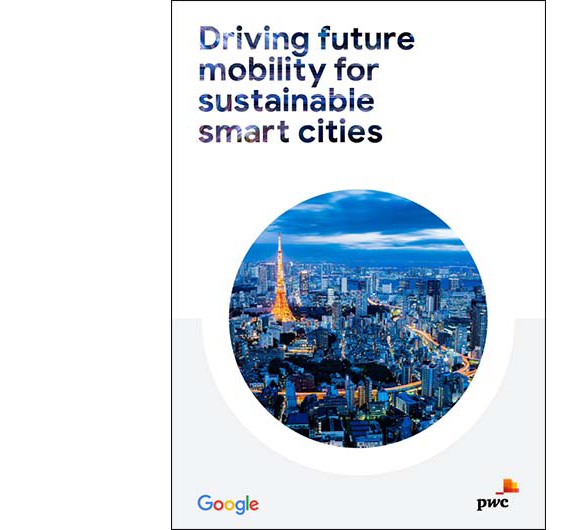{{item.title}}
{{item.text}}

Download PDF - {{item.damSize}}
{{item.text}}
The current landscape of cities is changing, and “Sustainability” has become both an important keyword and a goal which cites all over the world strive to achieve. Pursuing sustainability means not only reducing greenhouse gas (GHG) emissions, but also improving accessibility for all of the users of city services, as well as ensuring the profitability of those sustainable services.
Recent developments in emerging technologies, especially in the mobility sector, have made the shift toward sustainable societies and cities possible. In this report, jointly published by PwC Consulting and Google, we would like to introduce the ideal state of a sustainable smart city, by using various mobility-related use cases.
Table of contents
Foreword
Chapter 1: Current landscape of cities
1-1: Key challenges surrounding cities
1-2: The importance of sustainability
Chapter 2: The human-centric approach
2-1: What is the human-centric approach?
2-2: Humanizing the digital experience for all
Chapter 3: Sustainable mobility for all
Passenger mobility
Delivery services and logistics
Mobility infrastructure
Chapter 4: Redesigning smart cities
A way forward
At PwC Consulting and Google, we believe that a sustainable smart city is defined by the following 3 elements: eco-friendly infrastructure, economic viability, and well-being. And when building a sustainable smart city, it is vital that the city grows by balancing all of these 3 elements, rather than focusing solely on any one.
In order to achieve this, it is necessary to utilize technologies, and modern technology provides substantial opportunities for smart city use-cases. However, technology-led approaches that fail to take into account the interest of the people who live in, work in, and visit the city are fundamentally flawed, and will eventually lead to the demise of any initiative.
Therefore, it is important to take a “human-centric approach,” which positions the service users’ needs at the core of every project while engaging all stakeholders in the development process.
Considering the balance of the abovementioned 3 elements is also very important for implementing mobility solutions in smart cities. In this report, we categorize mobility services as “passenger mobility for the movement of people,” “parcel delivery and logistics for the movement of goods,” and “infrastructure that supports the operations of these mobility options.” To enable sustainable smart mobility solutions, we must also balance each of these respective elements with seamless data integration that spans multiple domains.
Various types of solutions and services can be effective for optimizing mobility and travel, which can in turn contribute to carbon-neutral efforts and ultimately to achieving a sustainable smart city. Improving the efficiency and convenience of individual solutions is therefore essential. At the same time, however, there is a natural limit to what can be achieved through individual solutions. Therefore, to realize a sustainable smart city, further improvements at a city-wide level are also necessary.
We believe that the most important aspect of a smart city is that the platform, services, and technologies provide solutions to the users’ actual needs, as services provide value only when they are used. We suggest 5 major points to consider when developing a smart city.
We hope that this report on sustainable smart cities, incorporating various mobility cases, will provide valuable insights for the development of human-centric cities.
You can download the full report below.




